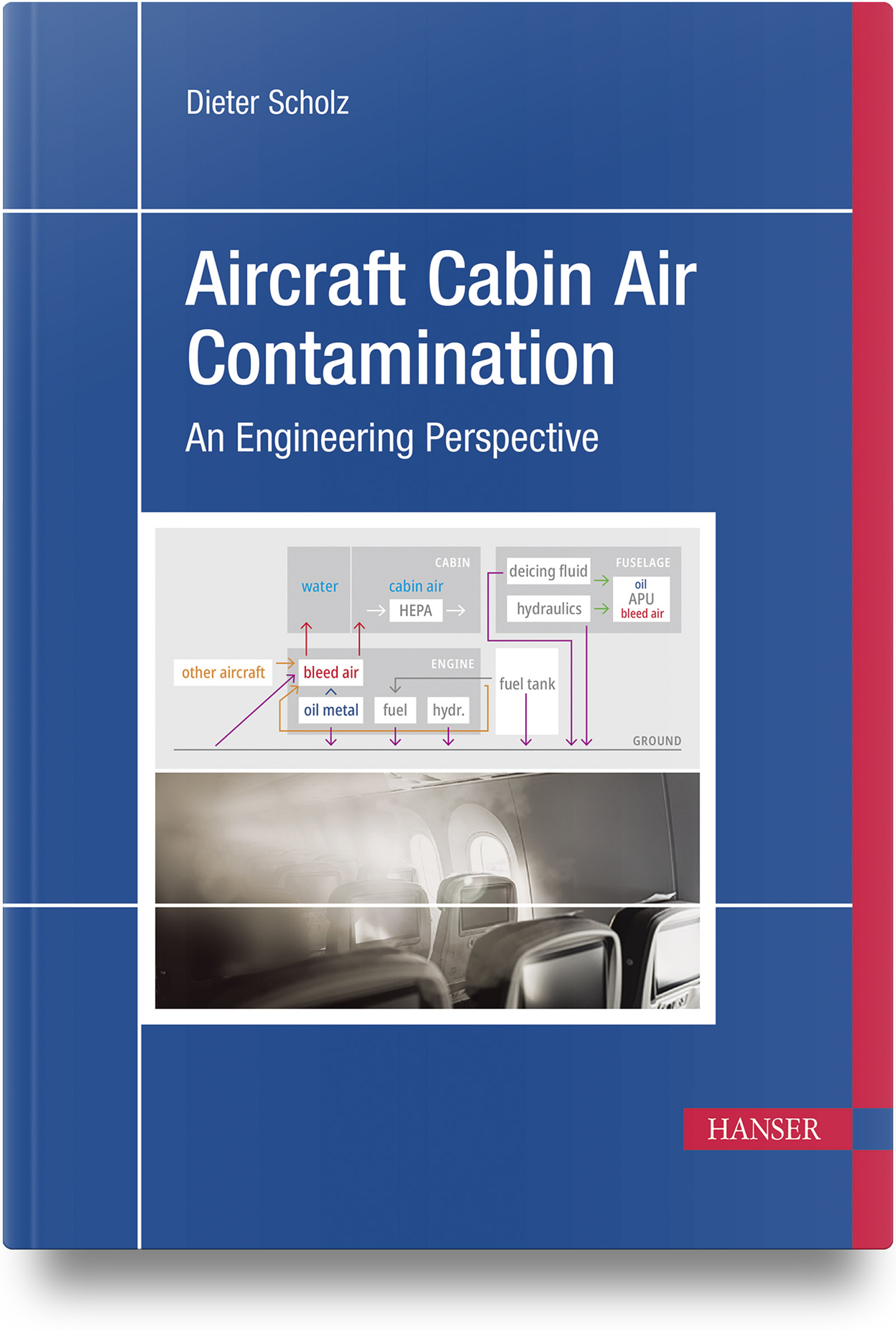- You are here:
- Home
- Engineering & Management
Our checkout for USA and Canada is powered by IndiePubs. You will be automatically redirected to the IndiePubs checkout process.
incl. taxes, plus possibly shipping costs
- ISBN: 978-3-446-48205-0
- Book details: 1. Edition, 01/2027
210 Pages, Flexibler Einband, komplett in Farbe
For technical reasons, highly toxic chemicals are added to the oil used in jet engines. These substances leave their intended places and get distributed everywhere. Unfortunately, while spreading, the substances also arrive in the human body with health and flight safety consequences. All occupants are potentially affected, but predominantly the crew, who spend much more time in an airplane than even a frequent flyer. On the one hand they experience cabin air contamination events (fume events), which can lead to nausea, headache, breathing problems and more, on the other hand they are constantly exposed to low dose contamination which accumulates over time.
This book offers insights into this hotly debated topic from an engineering perspective. The author explains in detail why and how chemicals get into the cabin and what can be done to avoid aircraft cabin air contamination now and in the future.
For technical reasons, highly toxic chemicals are added to the oil used in jet engines. These substances leave their intended places and get distributed everywhere. Unfortunately, while spreading, the substances also arrive in the human body with health and flight safety consequences. All occupants are potentially affected, but predominantly the crew, who spend much more time in an airplane than even a frequent flyer. On the one hand they experience cabin air contamination events (fume events), which can lead to nausea, headache, breathing problems and more, on the other hand they are constantly exposed to low dose contamination which accumulates over time.
This book offers insights into this hotly debated topic from an engineering perspective. The author explains in detail why and how chemicals get into the cabin and what can be done to avoid aircraft cabin air contamination now and in the future.
Prof. Dr. Dieter Scholz ist Leiter Aircraft Design und Systems Group (AERO) und Professor für Flugzeugentwurf, Flugzeugsysteme und Flugmechanik an der HAW Hamburg.
Prof. Dr. Dieter Scholz ist Leiter Aircraft Design und Systems Group (AERO) und Professor für Flugzeugentwurf, Flugzeugsysteme und Flugmechanik an der HAW Hamburg.
You may use the cover files free of charge to promote the book.
You may use the cover files free of charge to promote the book.
Carl Hanser Verlag GmbH & Co KG
Vilshofener Str. 10
81679 München
E-Mail: info@hanser.de
Safety instructions according to Art. 9 para. 7 sentence 2 GPSR are not required.
Carl Hanser Verlag GmbH & Co KG
Vilshofener Str. 10
81679 München
E-Mail: info@hanser.de
Safety instructions according to Art. 9 para. 7 sentence 2 GPSR are not required.

